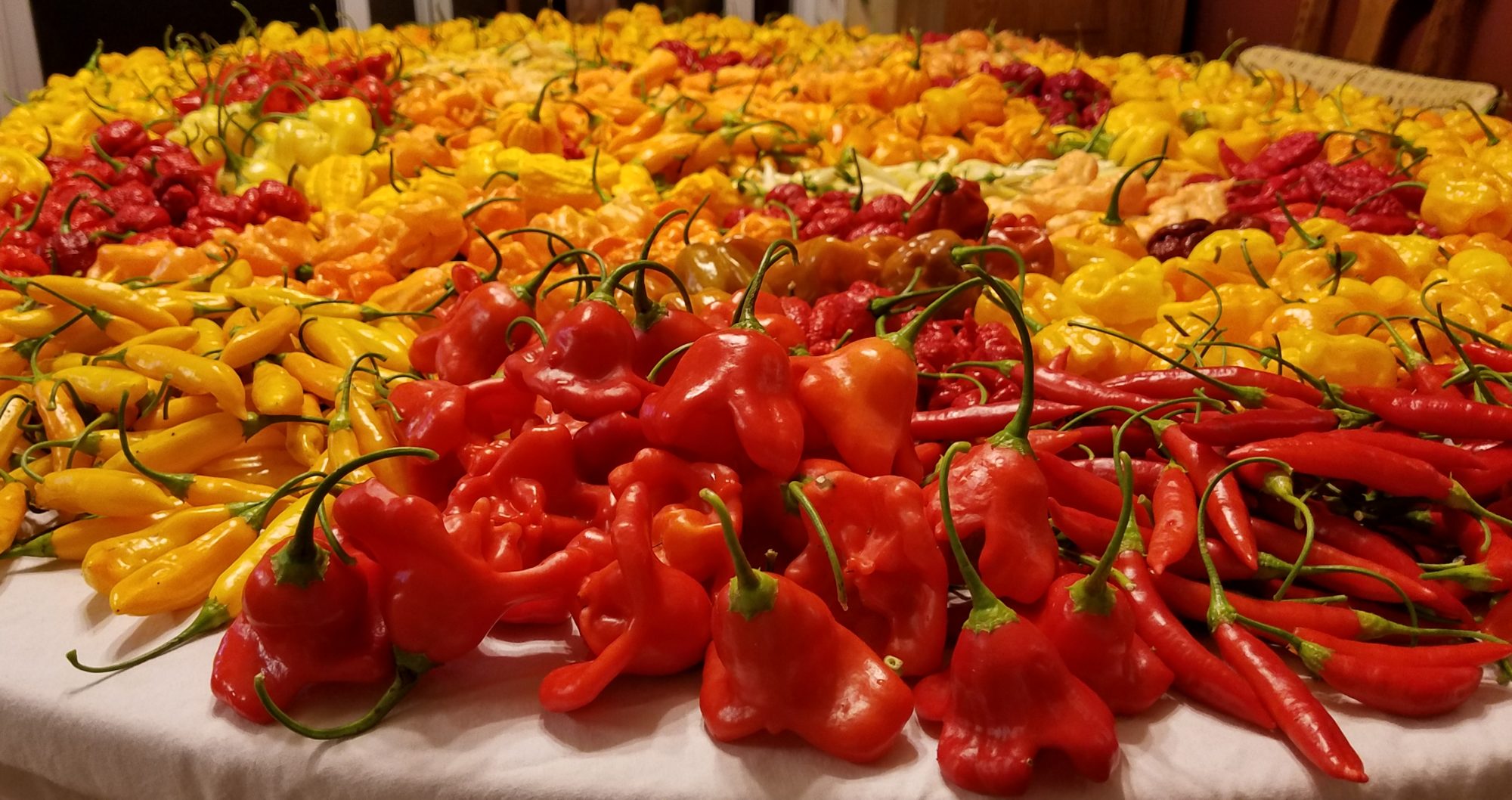Pepper basics
This is a primer for those venturing into the world of growing hot and superhot peppers for the first time.
Did you know?
- What we call the pepper, or “pod” is the fruit of the plant and is actually classified as a berry
- Peppers are all of the nightshade family (Solanaceae), as are tomatoes, eggplant, potato, and tobacco.
- The heat from a particular pepper is measured in Scoville Units, named after the originator of the testing method, Wilbur Scoville. It is basically a method that tests how far you have to dilute the pepper to get rid of the heat. For reference, a Jalapeno can have 4,000 to 8,000 Scoville units, a Habanero 200,000 to 350,000, the Bhut Jolokia tests at just over 1 million Scovilles, and the Carolina Reaper is said to have peaked over 2.2 million Scoville units.
- There are many health benefits to eating hot peppers including: vitamin C and increased metabolism. Also, capsaicin, the chemical that makes the pod hot, is being tested for possible benefits fighting cancer.
Most peppers that are grown in home gardens are from one of five species:
Species:
Capsicum Annuum: This is the most commonly grown species in North America and it contains sweet and bell peppers, as well as jalapenos and Cayenne among others. They have off-white, or in some varieties, purplish flowers. They also have a thicker stem and wider calyx which has ridges where it attaches to the pod.

Capsicum Baccatum: These pepper are South American and include the “Aji” peppers. They range from low heat, to very hot. Many Baccatum plants grow very tall (5 feet) and have white flowers with a green or gold corolla (inner part which radiates from the center). As the pods mature they hang down.
Capsicum Chinense: This species is found in many parts of the world and includes the hottest peppers, including the “super hot” peppers. Most of these varieties and strains produce white flowers with pods of all colors and shapes. There will be multiple flowers from a single node, and the stem is smooth, and the calyx is smooth and smaller than an Annuum.

Capsicum Frutescens: This is the least common of the five species, with the Tabasco being the most common in this species by far. The plants are compact and bushy. The flowers may be greenish white, with purple anthers. The pods are small, pointy, and point up.
Capsicum Pubescens: Pubescens means “hairy” and the leaves from this species have a fuzz on them and typically have purple flowers. The pods are thick fleshed and usually have black seeds, which are striking.

Apart from these 5 species, there are also some wild species that have been offered in the draft:
Capsicum Galapagoense
Capsicum Chacoense

Heat
A “Super Hot” pepper is generally one that is over 1 million Scoville units. That is over 100 times hotter than a jalapeno.
Super Hot Peppers include, but are not limited to the following:
- Bhut Jolokia – or “Ghost Pepper”: this was the first “super hot” to gain fame in the West.
- Trinidad Scorpion: These are hotter than ghost peppers and usually have a ‘stinger’ shape on the bottom
- Trinidad 7 Pot: This type of chili is said to have gotten its name because it was so hot, you could use one to season 7 Pots of stew.
About color:
In general, the heat of a certain variety differs with different strains of color within that variety. For example, a 7 Pot Yellow is a different heat level than a 7 Pot Brown. Here is a general rule to follow: Heat from smallest to largest – peach, yellow, orange, red, chocolate (brown).



